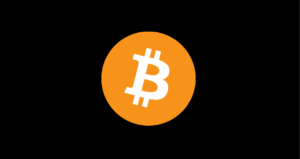In the world of cryptocurrencies, exciting developments are always on the horizon. One recent event that has grabbed the attention of the blockchain community is the Cardano Vasil hard fork. But what exactly does this mean for the blockchain and its users? Let’s break it down in simple terms.
First off, let’s understand what a hard fork is. In the world of blockchain technology, a hard fork refers to a radical change to a network’s protocol that makes previously invalid blocks or transactions valid, or vice versa. In this case, the Cardano Vasil hard fork has introduced new features and improvements to the Cardano blockchain.
One of the key aspects of the Cardano Vasil hard fork is the implementation of the Ouroboros Omega protocol. Ouroboros Omega is the latest version of Cardano’s consensus algorithm, which is crucial for maintaining the security and integrity of the blockchain. This upgrade aims to enhance the scalability, sustainability, and security of the Cardano network.
Another important feature introduced by the Cardano Vasil hard fork is the integration of metadata. Metadata allows users to attach additional information to transactions, making the blockchain more versatile and enabling a wide range of applications beyond simple value transfers. This opens up new possibilities for decentralized finance, governance systems, supply chain tracking, and more.
Furthermore, the hard fork has also brought improvements to Cardano’s smart contract capabilities. Smart contracts are self-executing contracts with the terms of the agreement directly written into code. With the enhancements introduced by the Vasil hard fork, Cardano now offers a more user-friendly and secure environment for deploying smart contracts, opening up opportunities for decentralized applications (dApps) to thrive on the platform.
In addition to these technical upgrades, the Cardano Vasil hard fork has implications for the broader blockchain ecosystem. By improving the scalability, security, and functionality of the Cardano network, the hard fork enhances Cardano’s competitiveness in the crowded cryptocurrency space. This could attract more developers, users, and projects to build on Cardano, potentially increasing its adoption and value.
Moreover, the successful implementation of the Vasil hard fork demonstrates Cardano’s commitment to continuous innovation and improvement. It showcases the platform’s ability to evolve and adapt to meet the changing needs of its users and the demands of the market. This bodes well for the long-term viability and success of Cardano as a prominent player in the blockchain industry.
In conclusion, the Cardano Vasil hard fork signifies a significant milestone in the evolution of the Cardano blockchain. With enhanced protocol features, improved smart contract capabilities, and a commitment to innovation, Cardano is poised to make a lasting impact in the world of cryptocurrencies. Stay tuned for further updates as Cardano continues to push the boundaries of what is possible on the blockchain.

